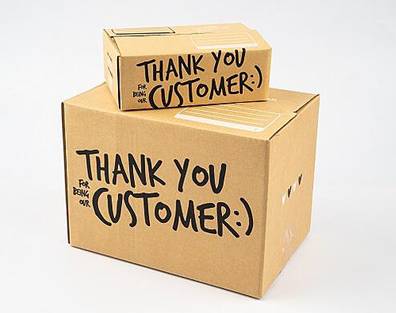10 Tactics to Create Member Loyalty in the First 30 Days
Putting a clock to something makes it more exciting.
Imagine sports without a clock. At some point, the ref just decides that’s enough basketball and blows the whistle and everyone goes home.
What about game shows? Wheel of Fortune would become a four-hour ordeal. "Let me know when you're ready to solve the puzzle, Jerry."
Clocks and limitations make things more exciting. They bring pressure, and add an element of life and death.
In the world of member engagement and retention, we don’t deal with deadlines often. We’ll put expiration dates on memberships, and maybe a “sign up by ____” deadline for events.
But otherwise, we tend to operate like a sport without a clock.
When a member signs up, or a customer purchases, there’s a lot of excitement and expectations. Yet, it can take months or even years for the person to fully realize the value of their investment.
You don't see or hear it, but there's a clock ticking. Members are making lifetime decisions as soon as they come into contact with your brand.
Your timer is to set to 30 days. That's how long most businesses need to solidify the relationship and put the member on a successful path.
Try any combination of these ten tactics to put your brand in position to earn engagement and loyalty from as many members as possible.

This goes without saying, right? Except most companies are ghosts after making a sale.
They make the majority of their investments in marketing to bring people in the door, then skimp on the actual customer experience.
Don’t be that company.
Members feel good about making an investment, and they need immediate validation of that investment. Create great materials and messages that impact someone as soon as they sign up.
There may come a time when members question their purchase or membership with your brand. Be sure it definitely isn’t when they first buy in.
We’ve argued that customer loyalty usually occurs when a brand consistently exceeds expectations. That begins with setting clear expectations.
What should people expect from your product or service? Tell them, and tell them you’re going to help them get there.
Then, do more than you promised.
The bigger idea, is to set measurables that everyone can agree upon. When you surpass those, you’re in a good position.
If necessary, put the member at ease pre-purchase with a money back guarantee.
- Connect them with a person
Many companies are following the SaaS model and using automated workflows in their onboarding process. Which is smart, and works well.
Somewhere in there, insert an actual human. Give each member a person they can refer to.
This may take the form of a phone call, or a handwritten note if you really want to get personal.
At minimum, any messages that the member receives should have a name of someone within your organization attached to them.
In a world of copycat automation, a personal touch makes someone feel valued and less like just another “user.”
Create a community for your business, or the type of problems you solve, and invite people to come in and speak freely.
Have a place dedicated for people to complain or ask questions, but also encourage people to share experiences and best practices.
This is beneficial because it helps regular members connect to superusers and get the most out of whatever it is you do.
It doesn’t have to be your own forum. A LinkedIn or Facebook group will suffice. A third-party forum like Reddit will work - just be certain to monitor and respond constantly.
- Engage them with member benefits
This is especially critical for membership organizations and any business offering a subscription model.
The idea applies to any business: show some initial value in any form possible.
The core product or offering is what drives people to become members. But oftentimes it’s something else they find valuable that keeps them signed on.
It could be the discount program, or the free access to third-party content, or a free ticket to your upcoming event.
Whatever it is, put it in their hands ASAP. Long before they realize the value of your core offering, they’ll already understand your value through extra benefits.
- Throw in something unexpected
 The best time to engage in a little surprise and delight is when people aren’t expecting it (hence the whole “surprise” aspect, right?).
The best time to engage in a little surprise and delight is when people aren’t expecting it (hence the whole “surprise” aspect, right?).
When someone signs up, tack on a free month of membership. Send them a note with an extra gift. Buy their lunch.
This goes back to the point we made above about being human. People give each other gifts without expecting anything in return.
It’s just showing appreciation. Small things like this come into play when a member is looking at your cheaper competitor, or when renewal time comes due.
Don’t just settle for an email address. Push for a Twitter follow or Facebook Like. Give something away if you have to.
Just don’t be content to rely on one communication channel. Email is still king, but you can showcase your brand in many different ways on new media and other channels. Get people to follow as many of them as you can.
For years the iPhone was sold without instructions, and it led to a large void of outside experts who would write articles about how to do basic things, like activating Siri. Apple caught on eventually, and in recent years has included a “Tips” app that walks users through the more nuanced operations of the phone.
 The point is to empower your members to be experts at whatever it is you’re offering. Put them in position to solve problems, the reason they came to you in the first place.
The point is to empower your members to be experts at whatever it is you’re offering. Put them in position to solve problems, the reason they came to you in the first place.
This could be an interactive tutorial (like the one we added to our newest mobile coupon app), a simple handbook or an interactive YouTube video.
Just don’t leave it to chance.
- Show them the potential
Case studies are just as important for current members as they are to prospects.
Give members something to aspire to by showing them a peer who did something extraordinary with your product or service.
This is different from setting expectations. This is more about potential and possibilities.
Position your organization as an enabler, an aide in the aspirations members hold. Do it by showing them how you've already done it for others.
- Ask for referrals
Forget Net Promoter Score. Put it into action. Studies have shown that customers are most likely to refer someone within the first month, so here’s a chance to help yourself.
It isn’t just generating more members that helps you either. The Ben Franklin Effect proves that people who do you a solid are naturally more likely to be in your favor.
So don’t be shy - but also, don’t ask for this too early in the process. Prove yourself first.
IS THERE A RISK THAT YOU’RE GETTING TOO PUSHY, AND WILL RISK TURNING SOME MEMBERS OFF?
There are plenty of people who will buy and that’s all they care to hear of you ever again. They know what they need to do with your product or service, and will do it without your help.
You can’t worry about these people.
In general, it’s important to keep these two critical foundations of communication in mind:
- Communication frequency only becomes an issue when value is absent
- Build your brand around your ideal customer - the people who need you the most and will maximize you the most
As long as you’re helping and not simply trying to push more sales, you’ll build far more fans than enemies. Always.
And put forth your best effort to turn every member into a raving fan. If that means turning some off and having a few tell you to bug off, so be it. Serve your 20% who will drive your 80%.
30 DAYS LATER...
You can’t just relax after 30 days. Proving your value to the member is just the beginning.
Engagement and loyalty are earned (and lost) on a daily basis. Your organization has to constantly behave as if the clock is ticking down and time is about to run out on winning the member.
That doesn’t mean you communicate with the same intensity as you did in the first 30 days. Ideally your members will be off and running with your product or service, connected to peers and engaging as necessary on their own.
The touchpoints need to add increasing value. Continue sharing what new and unique things people are doing with your brand. Give your best members inside access to new upgrades. Consistently ask for feedback. Offer added value in the form of relevant third party partners. Ensure you have a world-class service operation.
Member engagement never ends. And the more of it you have, the higher the stakes rise. The organizations that become powerhouses consistently exceed expectations, even if those expectations are sky high.
And it all begins with a solid first month, with every aspect of your business pushing against time to place each new member in position for success.
(Hourglass image courtesy of Jamie)
Topics: member engagement
Written by: Brandon Carter





.jpeg)







Share your Comment.